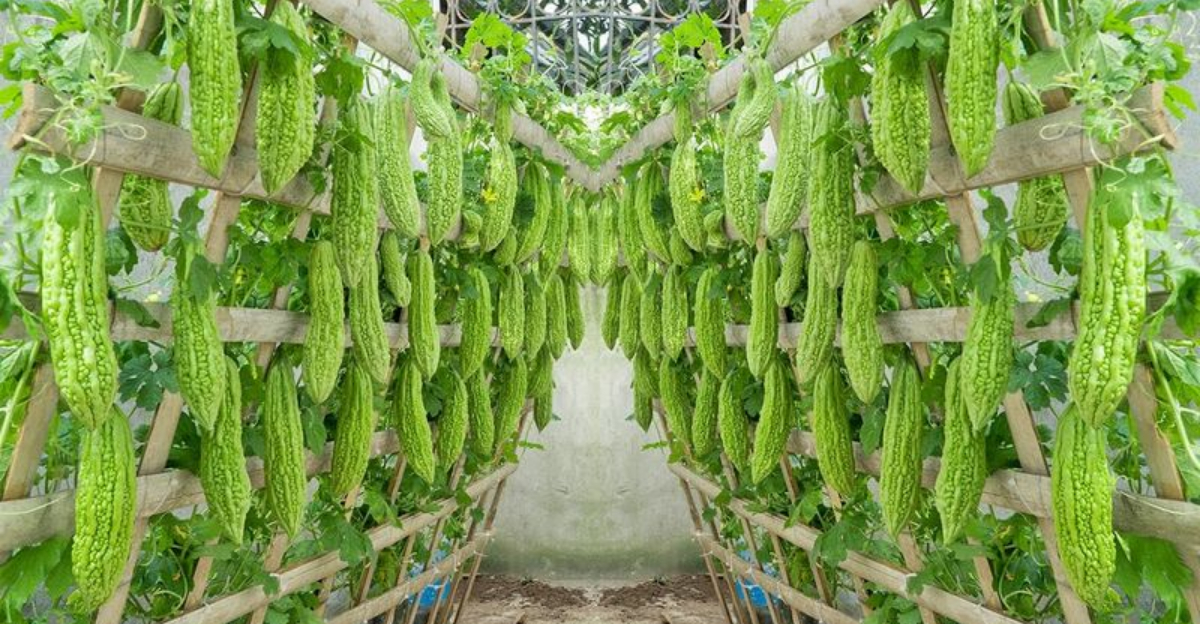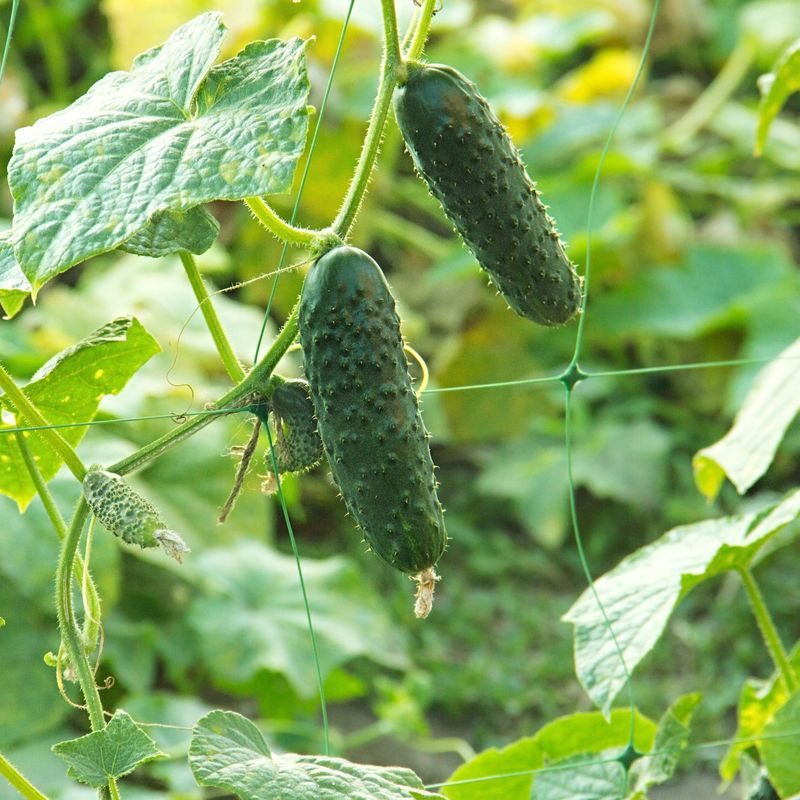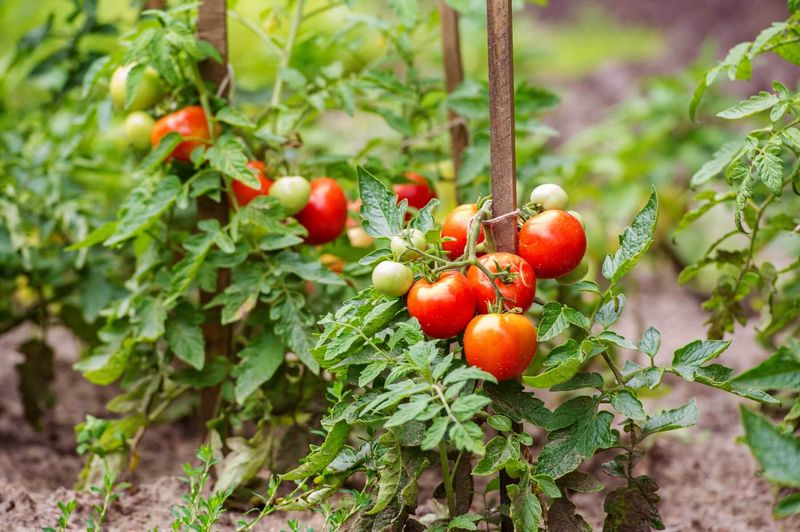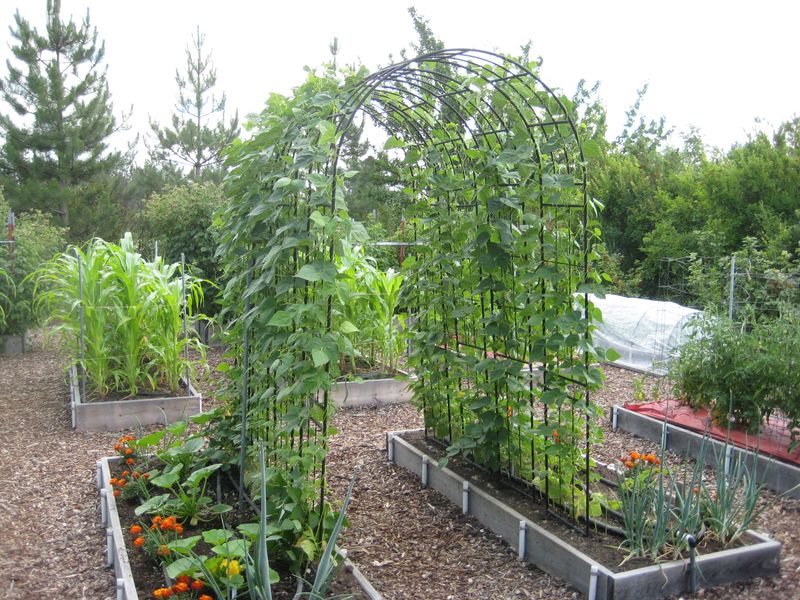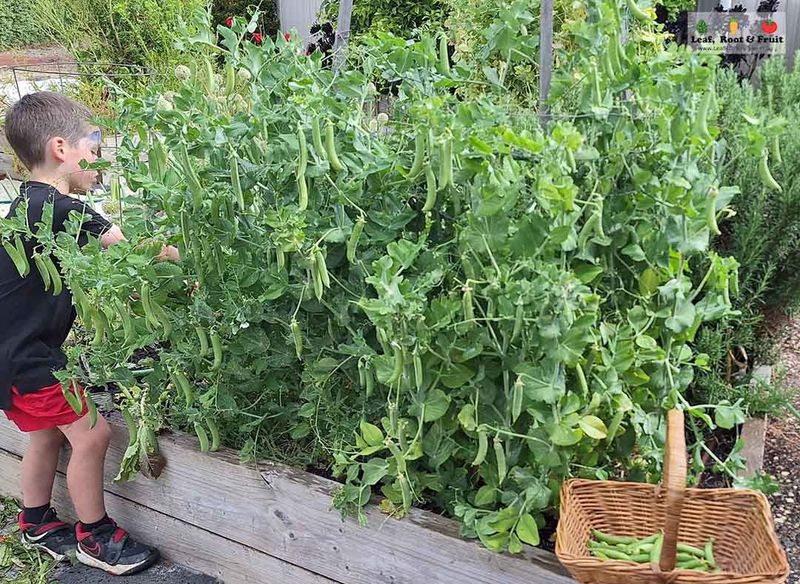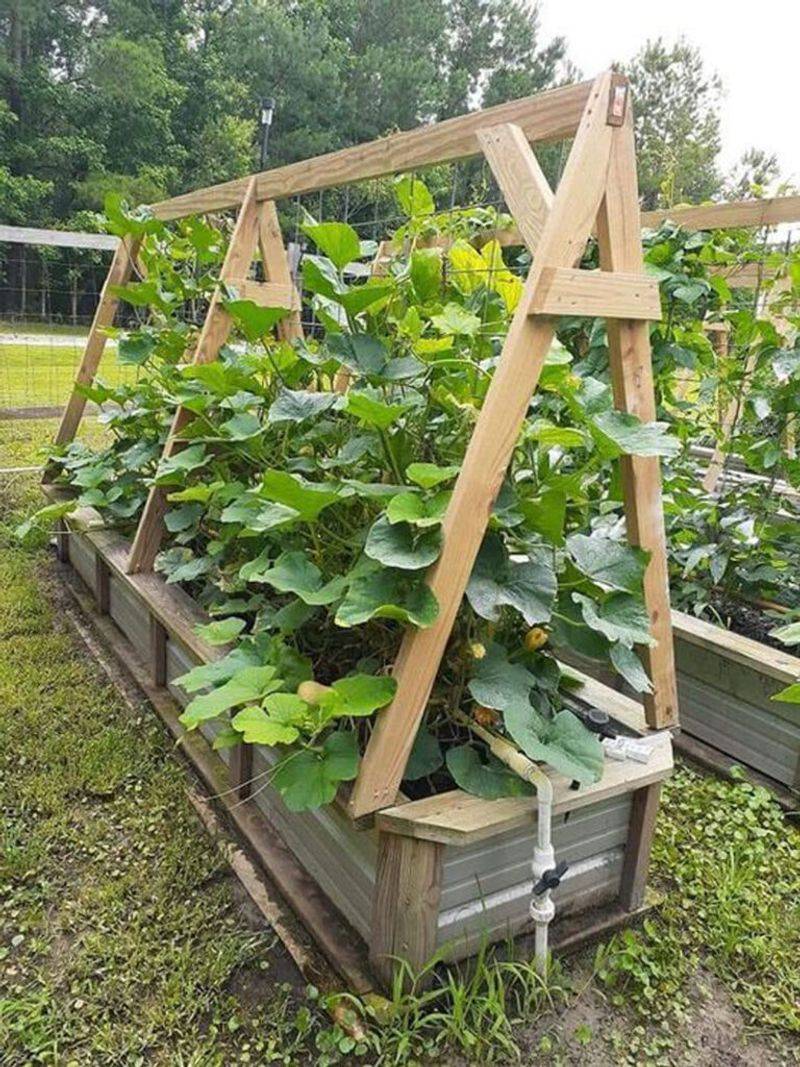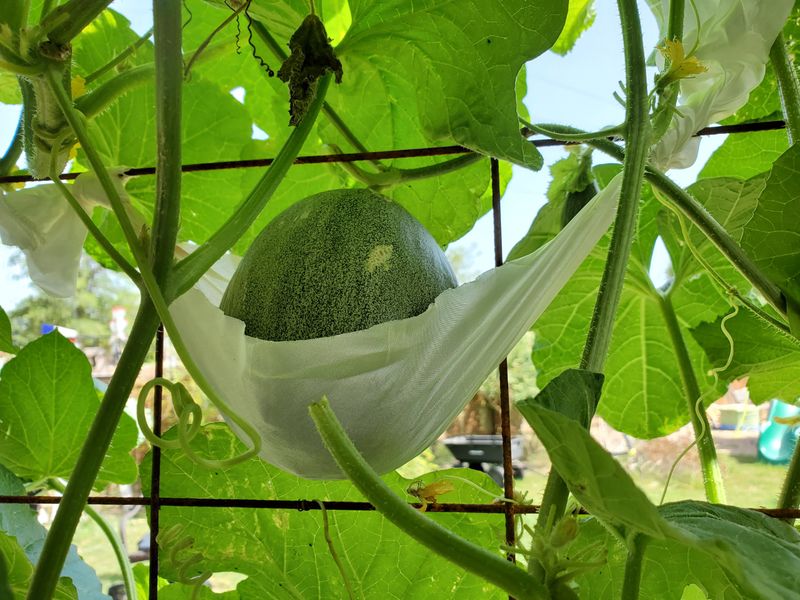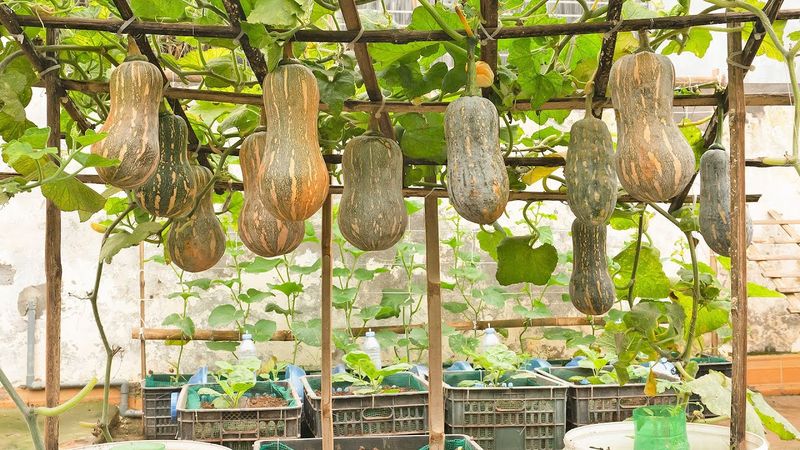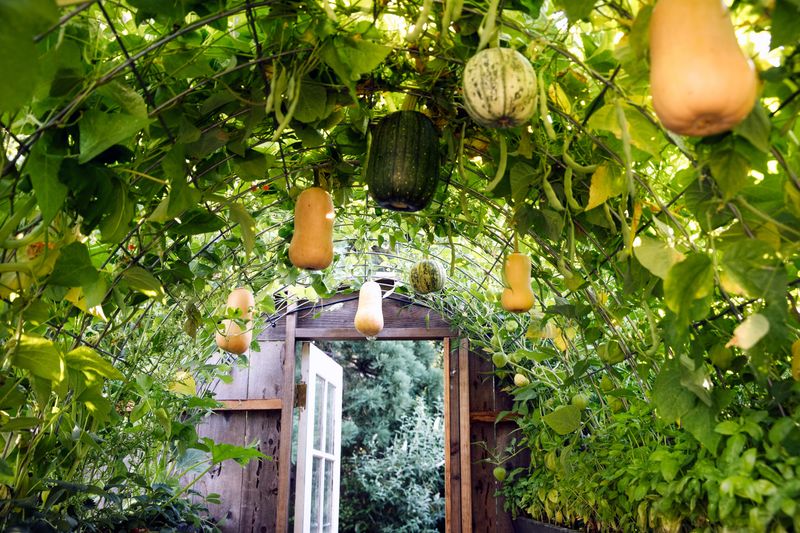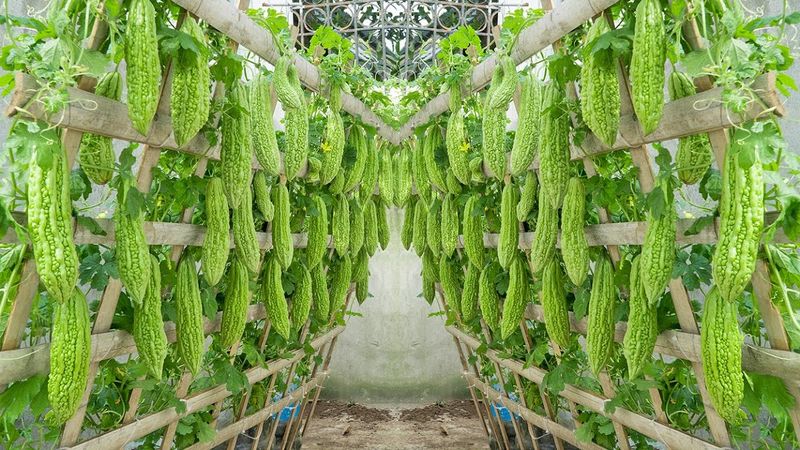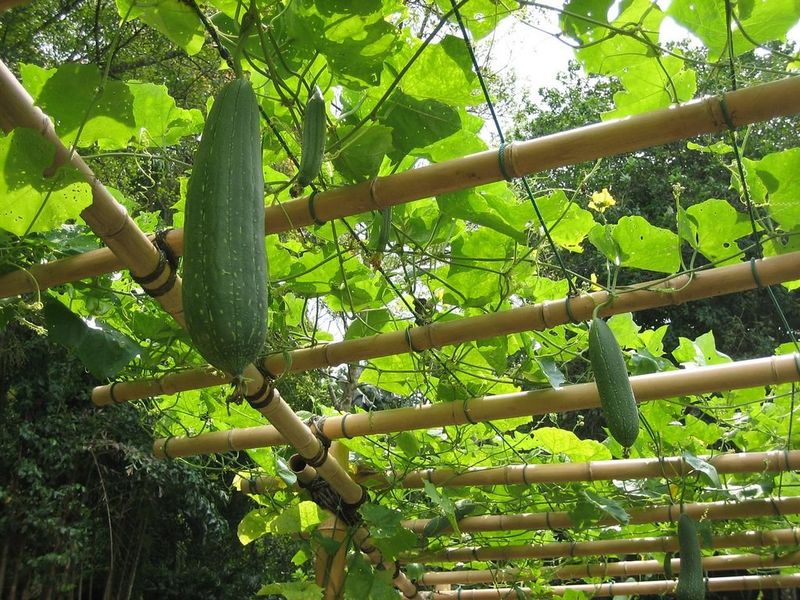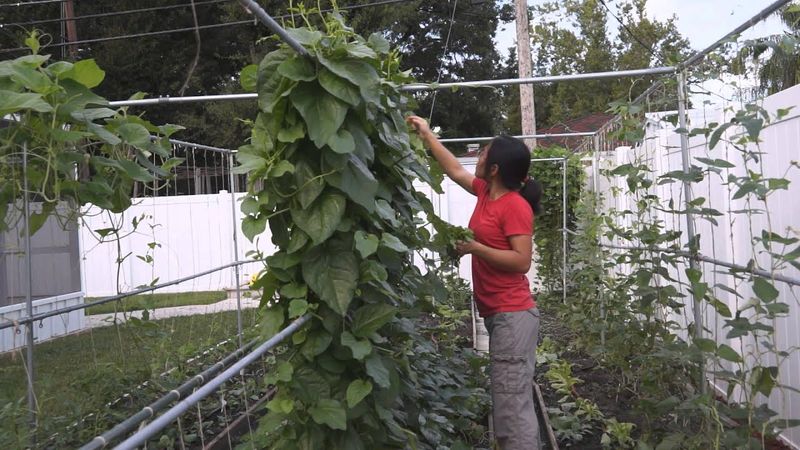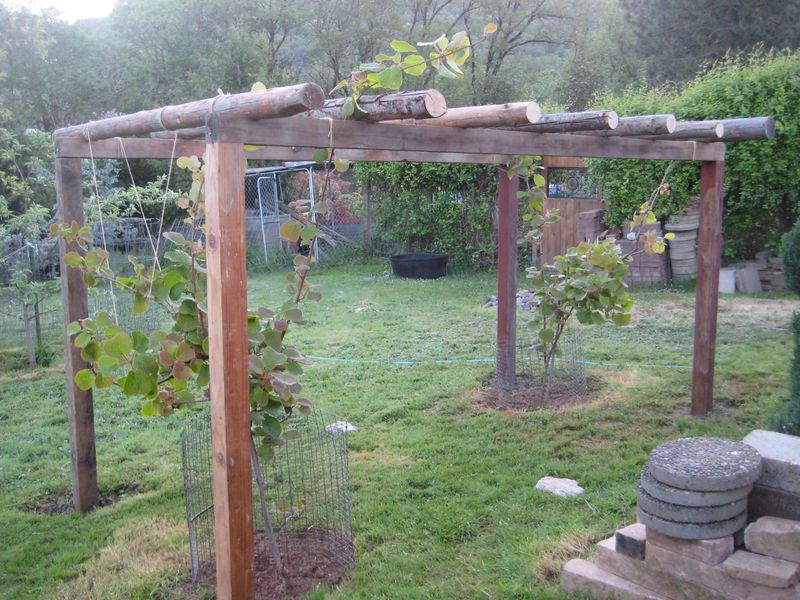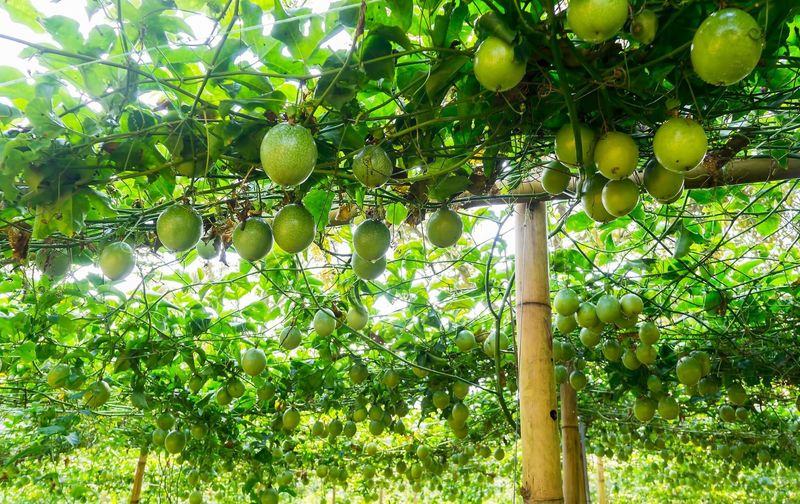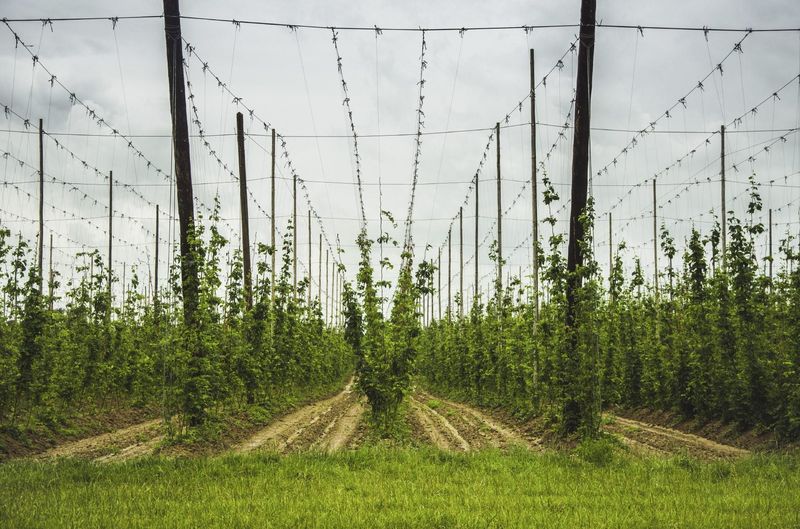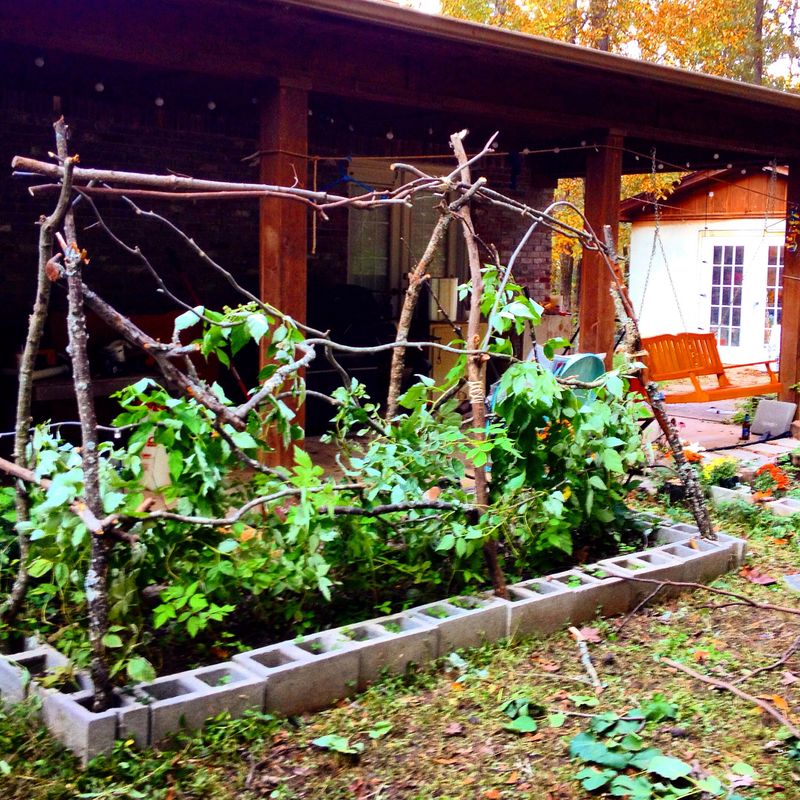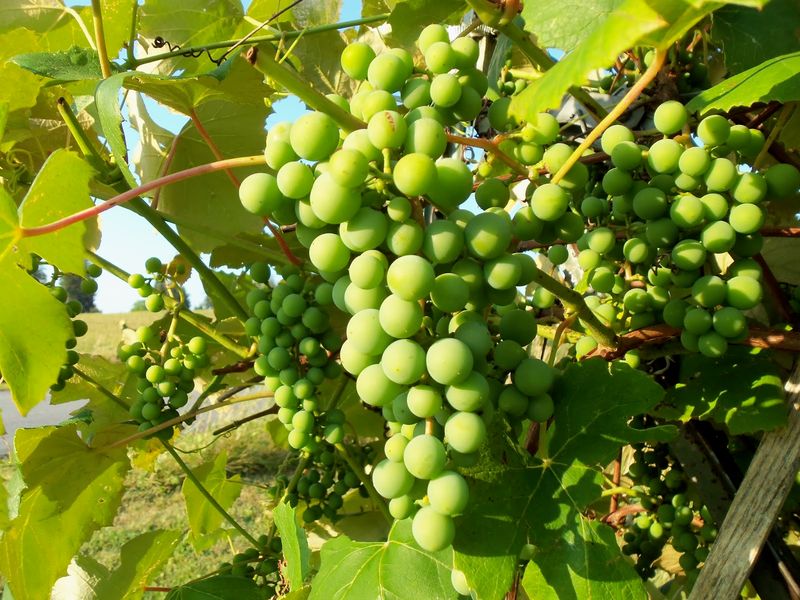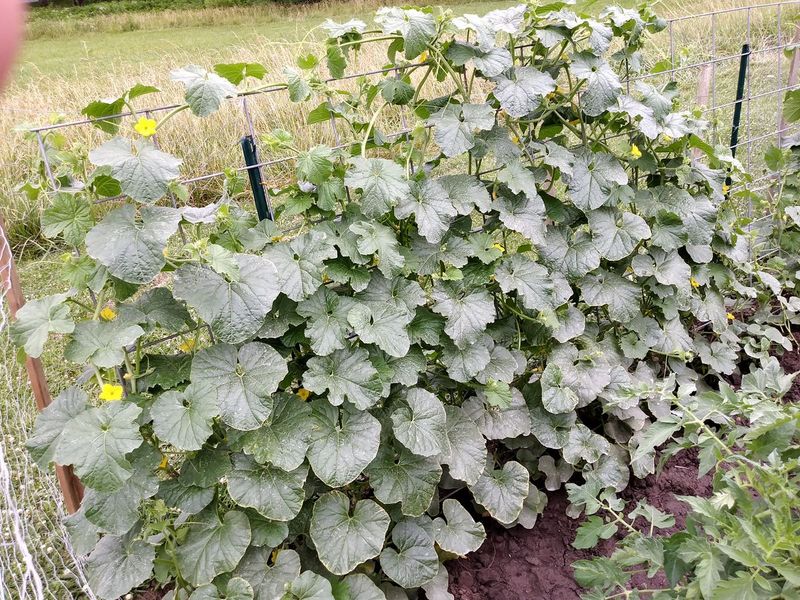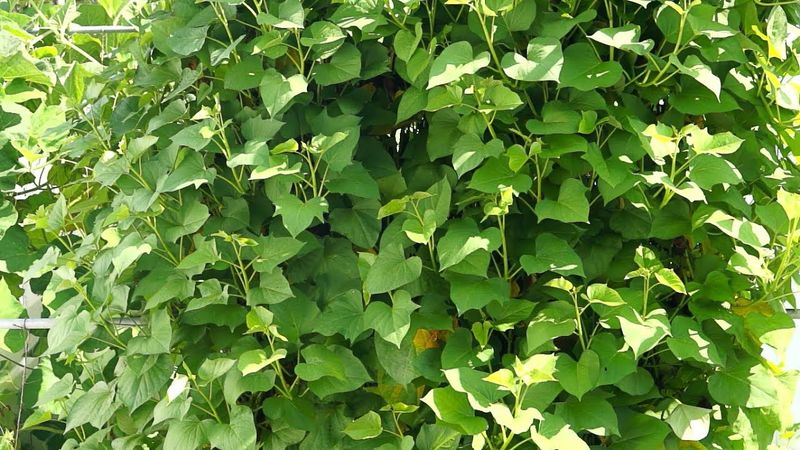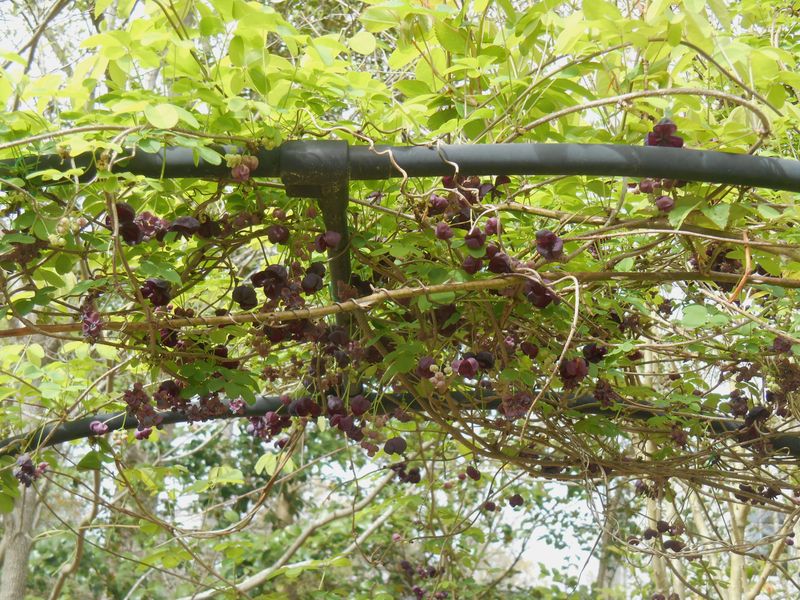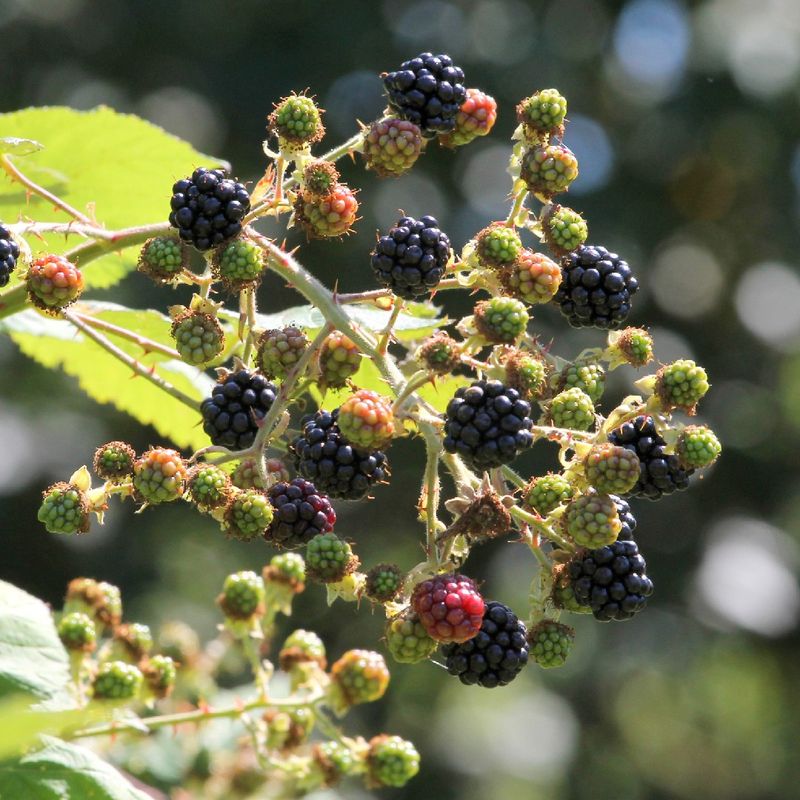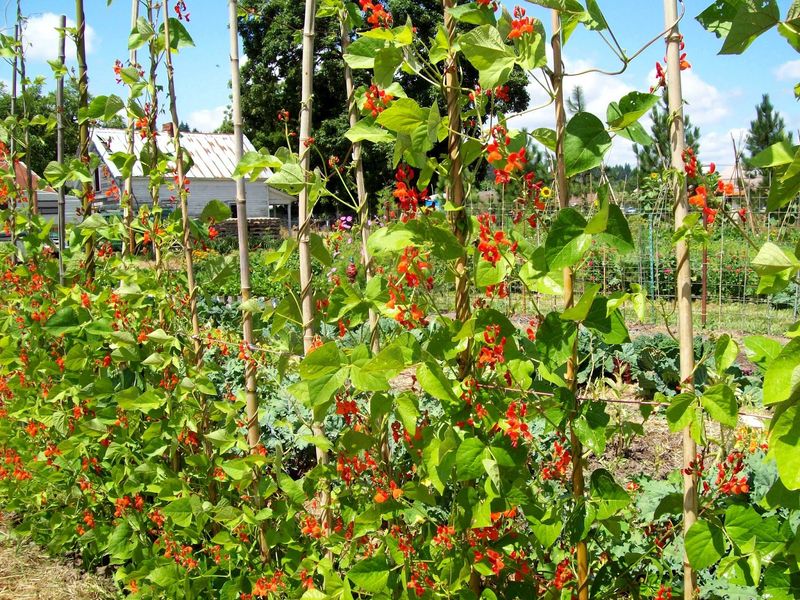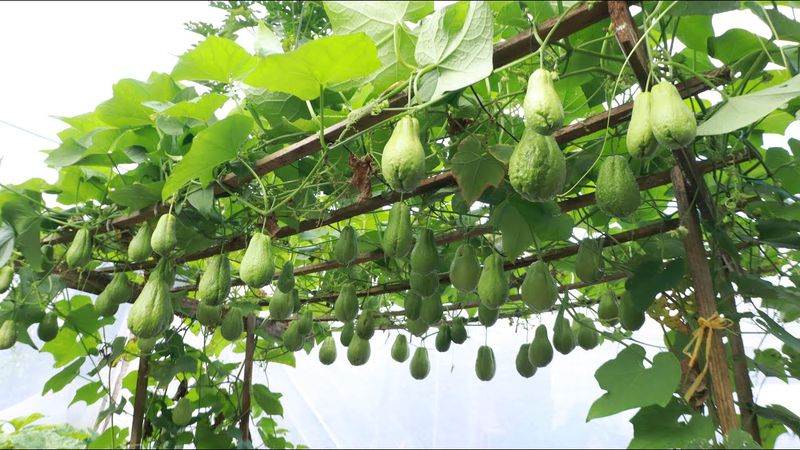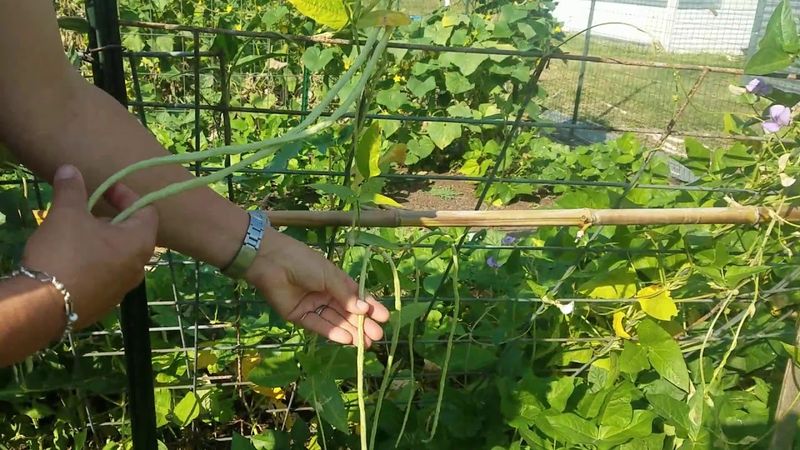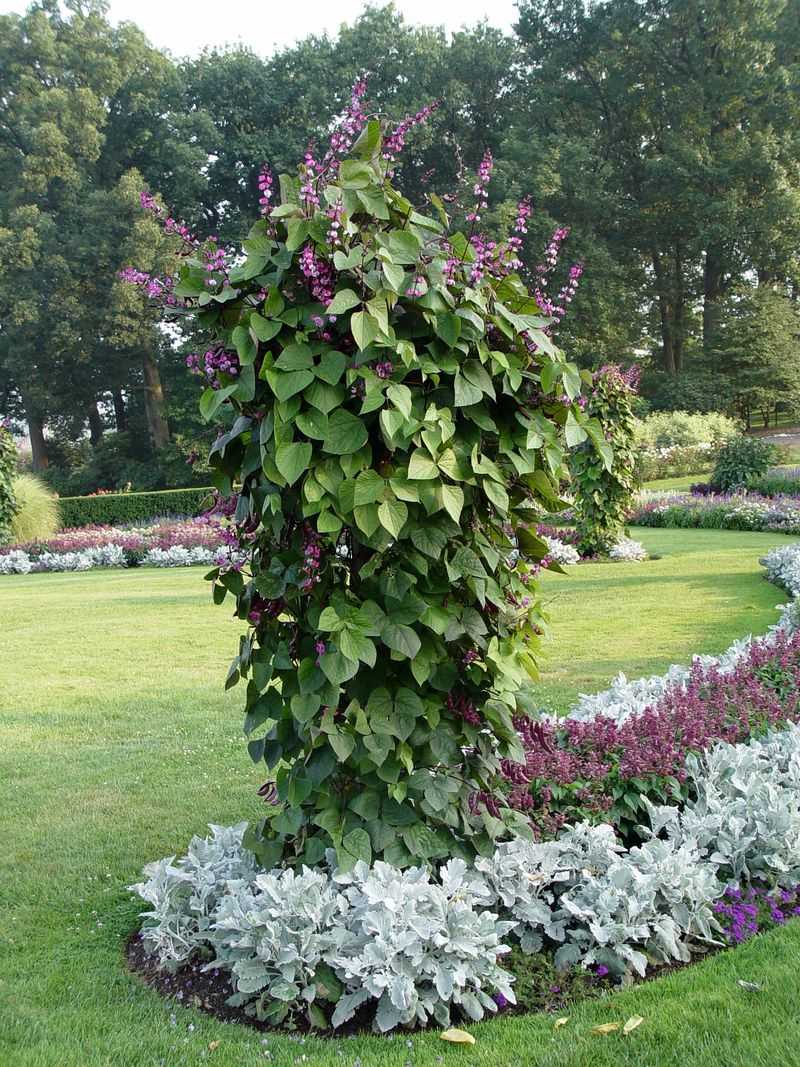Exploring the world of gardening with a trellis can revolutionize the way you cultivate vegetables. A trellis not only optimizes space but also enhances sunlight exposure and airflow, critical for plant health.
This guide unveils the best vegetables to grow on a trellis, offering practical insights into why these choices are both practical and rewarding for gardeners of all levels.
Get ready to transform your garden and elevate your harvest experience with these 27 unique and thriving vegetables.
1. Cucumbers
Cucumbers are a delightful addition to any garden, especially when grown on a trellis. These vining plants thrive with vertical support, which enhances airflow and reduces the risk of fungal diseases. A trellis also makes harvesting easier, as it keeps the fruit clean and visible.
Growing cucumbers upwards allows you to maximize garden space, making it perfect for small gardens or urban settings.
Additionally, this method provides cucumbers with better access to sunlight, promoting healthier growth and higher yields. Embrace this approach, and enjoy crisp, delicious cucumbers all season long.
2. Tomatoes
Tomatoes are synonymous with summer gardens, and a trellis can take their growth to new heights. Supporting tomato plants vertically prevents sprawling, keeping fruits off the ground and reducing rot. It also enhances air circulation, helping to prevent diseases.
With proper support, tomatoes can focus energy on producing robust, juicy fruits. This approach not only conserves garden space but also makes harvesting more convenient.
Whether you’re growing cherry, plum, or beefsteak tomatoes, using a trellis can lead to a more productive and enjoyable gardening experience.
3. Pole Beans
Pole beans epitomize the elegance and efficiency of vertical gardening. These climbers benefit immensely from a trellis, which supports their rapid growth and optimizes sun exposure.
The vertical setup encourages healthy foliage and bean production without overwhelming garden space.
Planting pole beans on a trellis not only beautifies a garden but also simplifies the harvesting process.
This method keeps beans off the ground, reducing spoilage and pests. Enjoying fresh, crisp beans straight from your garden becomes a breeze with this strategic growth approach.
4. Peas
Peas are a gardener’s delight, and their climbing nature makes them perfect candidates for a trellis. This support structure elevates the plants, protecting them from soil-borne diseases and pests.
The increased airflow and sun exposure foster healthier growth and abundant pea production.
Growing peas on a trellis saves space and makes harvesting easy, as the pods are more accessible.
It’s a great way to ensure a bountiful crop while adding vertical interest to your garden. Embrace the simplicity and efficiency of growing peas on a trellis this season.
5. Zucchini
Zucchini may seem like an unusual candidate for a trellis, but this method can yield impressive results.
A trellis supports the plant’s sprawling vines, keeping fruits off the soil and reducing rot. This setup enhances airflow and sun exposure, promoting healthier growth.
Vertical gardening with zucchini not only saves space but also keeps your garden tidy and organized. Harvesting becomes simpler, as fruits are more visible and accessible.
Consider this innovative approach to enjoy abundant zucchini while maintaining a neat and efficient garden space.
6. Melons
Melons, with their sprawling vines, greatly benefit from trellis support. This method keeps the fruits elevated, reducing ground contact and potential rot. A trellis also improves sun exposure and airflow, crucial for healthy growth and sweet melons.
Growing melons vertically optimizes garden space, making it suitable for smaller gardens. The added support helps the plant focus on fruit production, leading to a more abundant harvest.
Enhance your gardening experience with this practical and rewarding technique, and enjoy fresh, juicy melons all season long.
7. Pumpkins
Pumpkins may seem hefty for a trellis, but with proper support, they can thrive. Elevating pumpkin vines helps manage their growth and prevents sprawling, keeping the fruit off the ground. This reduces pest issues and improves airflow.
A trellis allows pumpkins to receive more sunlight, essential for ripening. It also makes better use of garden space, particularly in smaller plots.
With careful planning and support, pumpkins can flourish vertically, leading to a rewarding harvest of these iconic autumn vegetables.
8. Winter Squash
Winter squash benefits significantly from trellis gardening. Supporting the heavy vines vertically reduces ground clutter and makes the garden more manageable. A trellis helps in reducing pest and disease exposure by keeping the fruit elevated.
This method also enhances sunlight exposure, crucial for ripening the squash. It’s an efficient way to utilize space, particularly in compact gardens.
By growing winter squash on a trellis, you can enjoy a tidy garden and a plentiful harvest of these savory, nutrient-rich vegetables.
9. Bitter Melon
Bitter melon thrives when grown on a trellis, as this setup supports its climbing nature. The vertical growth allows for better air circulation and sun exposure, promoting healthy foliage and fruiting.
This method also keeps the vines organized and reduces ground pests.
By elevating bitter melon, you can make harvesting easier and more efficient. It’s an ideal way to maximize space, especially in smaller gardens. Embrace this technique to enjoy a robust crop of this unique, health-boosting vegetable in your garden.
10. Gourds
Gourds are a versatile and decorative addition to any garden, and they excel with trellis support.
The vertical structure helps manage their vigorous growth, keeping the vines tidy and off the ground. This reduces pest and disease exposure, ensuring healthier plants.
A trellis also optimizes sun exposure, essential for the gourds’ colorful development. This approach saves space and makes harvesting simpler, as the fruits are more accessible.
Add a touch of allure to your garden with vertically grown gourds, and enjoy their beauty and utility all season.
11. Malabar Spinach
Malabar spinach, with its vibrant foliage, thrives on a trellis. The climbing nature of this plant is supported beautifully by vertical gardening, which optimizes space and enhances air circulation. This setup helps prevent diseases and promotes vigorous growth.
Growing Malabar spinach vertically also facilitates easy harvesting and keeps the garden organized. It’s a perfect choice for gardeners looking to add lush greenery while maintaining an efficient and productive space.
Explore the benefits of trellis gardening with this unique and nutritious leafy green.
12. Kiwi
Kiwis are an exotic addition to the garden, and a trellis can elevate their growth. These vines require support to manage their vigorous spread, and a trellis does just that by organizing the plant’s structure.
This method enhances airflow and sun exposure, crucial for healthy fruiting.
Growing kiwis vertically saves space and makes harvesting more convenient. With proper care and support, your garden can produce an abundant supply of these delicious, vitamin-rich fruits.
Experience the joy of homegrown kiwis by incorporating a trellis into your gardening routine.
13. Passionfruit
Passionfruit vines, with their tropical allure, thrive with trellis support. The vertical growth system optimizes sunlight exposure and airflow, vital for healthy fruit development. A trellis also helps manage the vigorous vines, keeping the garden tidy and productive.
Growing passionfruit vertically saves space and makes harvesting more straightforward.
It’s a rewarding way to enjoy these exotic fruits right from your garden, enhancing your gardening experience with their unique flavor and vibrant presence. Embrace this method and relish the benefits of passionfruit trellis gardening.
14. Hops
Hops are an exciting addition to the garden, particularly for homebrewers. A trellis is essential for supporting their rapid vertical growth, which can reach impressive heights. This setup optimizes sun exposure and airflow, critical for cone development.
By growing hops on a trellis, you make efficient use of space while simplifying maintenance and harvesting. It’s a great way to produce your own brewing ingredients while adding vertical interest to your garden.
Consider incorporating hops into your garden with the help of a trellis for a unique and practical gardening endeavor.
15. Blackberries
Blackberries thrive with trellis support, which helps manage their sprawling canes. The vertical structure keeps the plant organized, reducing pest exposure and improving air circulation. This method also makes harvesting easier and less thorny.
Growing blackberries on a trellis maximizes space and sunlight exposure, promoting healthier growth and fruiting. It’s an efficient way to enjoy a bountiful crop of these sweet, nutritious berries.
Add a delicious and fruitful dimension to your garden by utilizing a trellis for your blackberries.
16. Raspberries
Raspberries, with their delicious berries, flourish when supported by a trellis. This structure effectively manages the canes’ growth, reducing tangling and improving air circulation. It also simplifies harvesting, making it less cumbersome and more enjoyable.
Using a trellis maximizes garden space and enhances sunlight exposure, essential for robust raspberry production.
This approach ensures a healthier and more productive raspberry patch, allowing you to savor the fruits of your labor with ease. Enhance your garden’s productivity and aesthetic with vertically grown raspberries.
17. Grapes
Grapes, synonymous with vineyards, excel when grown on a trellis. This method supports their sprawling vines, optimizing sunlight exposure and air circulation. A trellis helps manage vine growth, keeping the garden tidy and productive.
Growing grapes vertically saves space and makes harvesting easier. It’s an efficient way to cultivate these fruits, whether for fresh eating or winemaking.
Transform your garden into a mini-vineyard by incorporating a trellis, and enjoy an abundant supply of delicious grapes.
18. Cantaloupe
Cantaloupe benefits immensely from vertical gardening. Supporting cantaloupe vines with a trellis keeps the fruits off the ground, reducing rot and pest issues. This setup optimizes sun exposure and airflow, crucial for sweet, juicy melons.
Vertical growing conserves garden space, making it ideal for smaller plots. It also simplifies the harvesting process, as fruits are more accessible. Explore the advantages of growing cantaloupe on a trellis and enjoy a bountiful harvest of these delightful melons.
19. Watermelon
Watermelons may seem unconventional for a trellis, but with the right support, they thrive. Elevating watermelon vines prevents sprawling and keeps the fruits off the ground, reducing disease and pest exposure.
This method enhances airflow and sun exposure, vital for ripening.
By growing watermelons vertically, you make efficient use of space and simplify the harvesting process. It’s a novel approach to enjoy fresh, juicy watermelons from your garden.
Embrace this technique and elevate your watermelon-growing experience with a trellis.
20. Sweet Potatoes
Sweet potatoes, typically known for underground growth, can also benefit from trellis support. The vines’ climbing nature is well-suited to vertical gardening, which enhances airflow and reduces ground-level diseases.
This setup also tidies the garden, keeping it organized.
Using a trellis optimizes space, making it ideal for small gardens. It also simplifies maintenance and harvesting, allowing for a more productive experience.
Consider exploring this innovative method to grow sweet potatoes and enjoy their hearty, nutrient-rich yield.
21. Akebi
Akebi, an exotic fruiting vine, flourishes on a trellis. The support provided by vertical gardening helps manage its vigorous growth, keeping the vines organized and off the ground.
This method enhances sunlight exposure and air circulation, crucial for healthy fruit development.
Growing akebi on a trellis saves space and simplifies harvesting. It’s a unique addition to any garden, offering an intriguing look and taste. Embrace the benefits of trellis gardening and explore the delightful world of akebi in your garden.
22. Himalayan Blackberry
Himalayan blackberries are known for their robust growth, and a trellis can help manage their vigor.
Supporting these plants vertically keeps the canes organized, reducing pest and disease exposure. This method also makes harvesting more accessible and less thorny.
Growing Himalayan blackberries on a trellis maximizes space and sunlight exposure, promoting healthier growth. It’s an efficient way to enjoy a bountiful harvest of these juicy, flavorful berries.
Transform your garden with the addition of Himalayan blackberries supported by a trellis.
23. Scarlet Runner Beans
Scarlet runner beans are a vibrant and productive choice for trellis gardening. The vertical setup enhances their climbing nature, optimizing sun exposure and airflow. This method supports healthy foliage and bean production while saving garden space.
With the support of a trellis, scarlet runner beans can reach impressive heights, adding beauty and utility to your garden.
Harvesting becomes a breeze as beans hang conveniently within reach. Embrace the elegance and efficiency of growing scarlet runner beans on a trellis in your gardening endeavors.
24. Chayote
Chayote, a unique and versatile vegetable, thrives when grown vertically. The trellis supports its climbing nature, reducing ground clutter and pest exposure. This approach enhances sunlight and airflow, essential for healthy growth and fruiting.
Growing chayote on a trellis saves space and makes harvesting more accessible. It’s a practical and efficient way to enjoy an abundant crop of this nutritious, pear-shaped vegetable.
Add a touch of variety to your garden by incorporating chayote and experience the benefits of trellis gardening.
25. Yardlong Beans
Yardlong beans, known for their impressive length, are perfect for trellis gardening. The vertical support encourages vigorous growth, optimizing sun exposure and air circulation. This method saves space and simplifies the harvesting process, as beans are easily accessible.
Growing yardlong beans on a trellis makes efficient use of your gardening area while adding vertical interest. It’s a rewarding way to enjoy a plentiful harvest of these unique and nutritious beans. Explore the potential of yardlong beans with the support of a trellis in your garden.
26. Hyacinth Bean
Hyacinth beans, with their ornamental flowers and pods, thrive on a trellis. The vertical growth system supports their climbing nature, optimizing space and improving air circulation. This method enhances the plant’s health and productivity, making it an excellent choice for any garden.
Utilizing a trellis not only adds beauty but also simplifies the harvesting process. Enjoy the benefits of growing hyacinth beans vertically, and add a splash of color and utility to your garden with this versatile plant.
